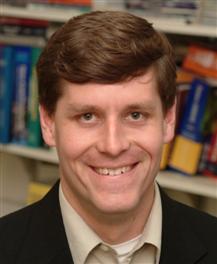Date
Cost
Free and open to the public
Location
Harris Corporation Engineering Center, Room 101A
Description
This talk will highlight our latest efforts to develop strategies for purifying, functionalizing, and assembling carbon nanomaterials into functional devices. For example, we have recently developed and commercialized a scalable technique for sorting surfactant-encapsulated single-walled carbon nanotubes (SWCNTs) by their physical and electronic structure using density gradient ultracentrifugation (DGU). The resulting monodisperse SWCNTs enhance the performance of thin film transistors, infrared optoelectronic devices, photovoltaics, catalysts, and transparent conductors. The DGU technique also enables multi-walled carbon nanotubes to be sorted by the number of walls and solution phase graphene to be sorted by thickness, thus expanding the suite of monodisperse carbon nanomaterials. By extending our DGU efforts to carbon nanotubes and graphene dispersed in biocompatible polymers (e.g., DNA, Pluronics, Tetronics, etc.), additional opportunities have emerged for monodisperse carbon nanomaterials in biomedical applications. In addition to solution-phase approaches, this talk will also discuss vacuum compatible methods for functionalizing the surfaces of carbon nanomaterials. For example, a suite of perylene-based molecules form highly ordered self-assembled monolayers (SAMs) on graphene via gas-phase deposition. The tailored chemical reactivity of these SAMs allow disparate materials (e.g., high-k gate dielectrics) to be seamlessly integrated with graphene, thus enabling the fabrication of capacitors, transistors, and related electronic/excitonic devices. Alternatively, via aryl diazaonium chemistry, functional polymers can be covalently grafted to graphene, while exposure to atomic oxygen enables chemically homogeneous and thermally reversible epoxidation of graphene. In addition to presenting opportunities for graphene-based chemical and biological sensing, covalent grafting allows local tuning of the electronic properties of the underlying graphene.
Presenter

Mark C. Hersam, Ph.D.
Materials Science and Engineering
Northwestern University
More information
Light refreshments will be served
Contact
Ushaben Lal NanoScience Technology Center 407-882-0032 usha@ucf.edu